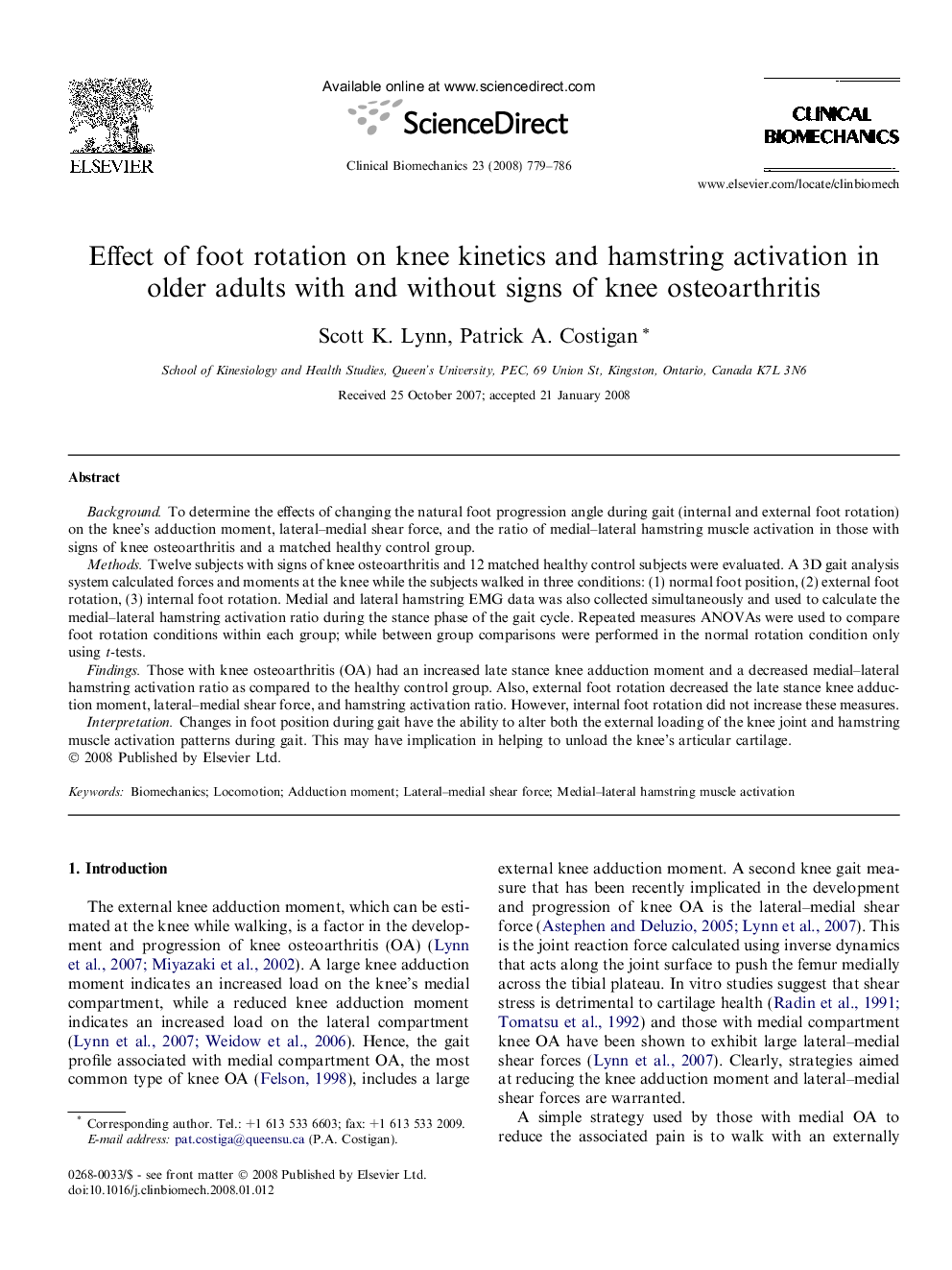| Article ID | Journal | Published Year | Pages | File Type |
|---|---|---|---|---|
| 4051084 | Clinical Biomechanics | 2008 | 8 Pages |
BackgroundTo determine the effects of changing the natural foot progression angle during gait (internal and external foot rotation) on the knee’s adduction moment, lateral–medial shear force, and the ratio of medial–lateral hamstring muscle activation in those with signs of knee osteoarthritis and a matched healthy control group.MethodsTwelve subjects with signs of knee osteoarthritis and 12 matched healthy control subjects were evaluated. A 3D gait analysis system calculated forces and moments at the knee while the subjects walked in three conditions: (1) normal foot position, (2) external foot rotation, (3) internal foot rotation. Medial and lateral hamstring EMG data was also collected simultaneously and used to calculate the medial–lateral hamstring activation ratio during the stance phase of the gait cycle. Repeated measures ANOVAs were used to compare foot rotation conditions within each group; while between group comparisons were performed in the normal rotation condition only using t-tests.FindingsThose with knee osteoarthritis (OA) had an increased late stance knee adduction moment and a decreased medial–lateral hamstring activation ratio as compared to the healthy control group. Also, external foot rotation decreased the late stance knee adduction moment, lateral–medial shear force, and hamstring activation ratio. However, internal foot rotation did not increase these measures.InterpretationChanges in foot position during gait have the ability to alter both the external loading of the knee joint and hamstring muscle activation patterns during gait. This may have implication in helping to unload the knee’s articular cartilage.
